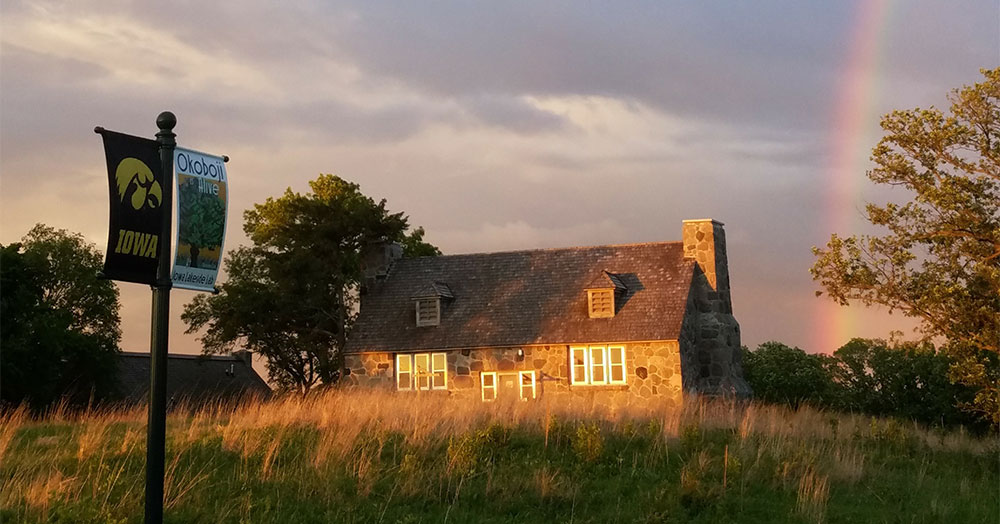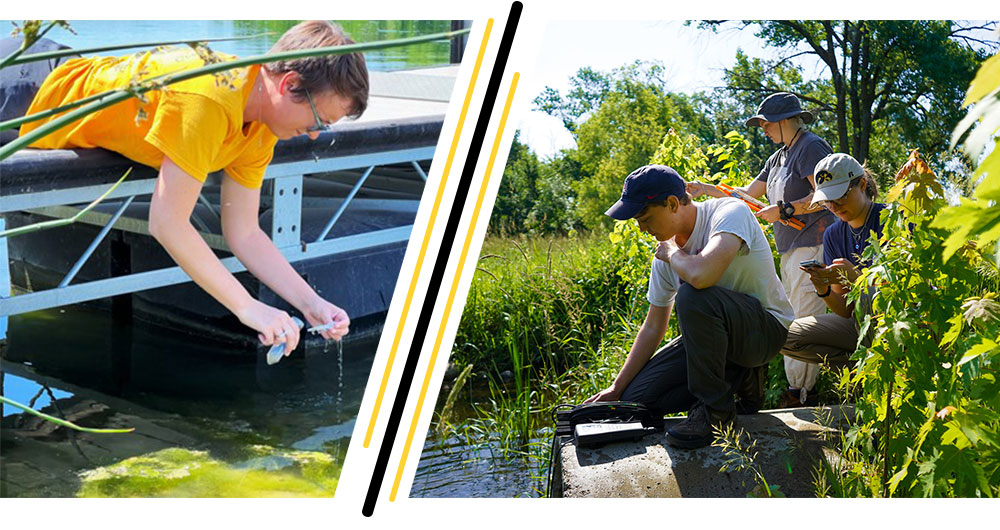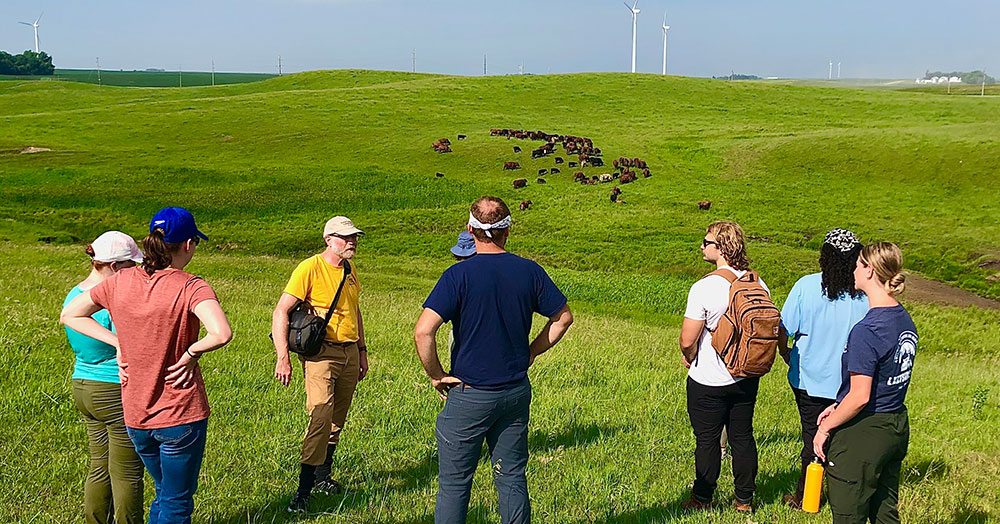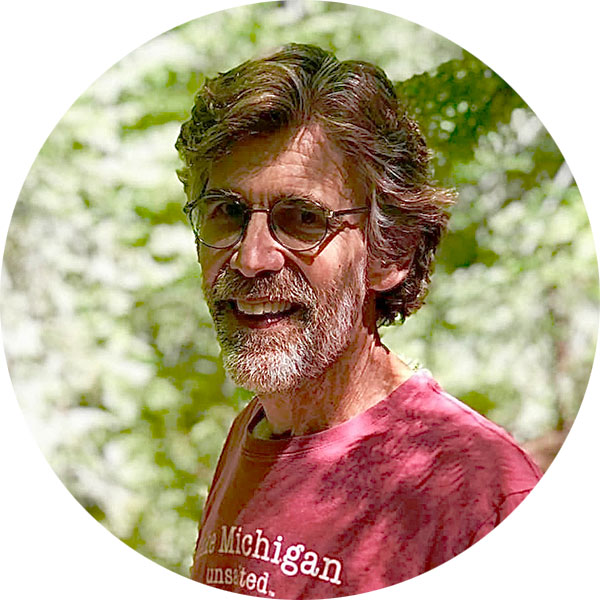At Iowa's Living Lab, the Arts and Sciences Harmonize
 PHOTO COURTESY IOWA LAKESIDE LABORATORY
Owned by the state of Iowa and operated through the Iowa Board of Regents, Iowa Lakeside Laboratory provides science classes and research opportunities for university students.
PHOTO COURTESY IOWA LAKESIDE LABORATORY
Owned by the state of Iowa and operated through the Iowa Board of Regents, Iowa Lakeside Laboratory provides science classes and research opportunities for university students.
My first class at Iowa, as a freshman in 1979, met in Macbride Hall: Ecology and Evolution with Professor Richard Bovbjerg. His lectures—and this was long before PowerPoint—inspired and entertained. My favorite was his hilarious reenactment of two crayfish mating. Squatting down, with his “claws” up in the air, he played the parts of both the male and the female, imagining out loud what they might be thinking. This illustration stemmed from Bovberg’s study of crayfish with students at Iowa Lakeside Laboratory.
Back then I had no idea where or what the Lakeside Lab was, nor what a remarkable educational resource it has been for over a century. Nor did I know that Macbride Hall was named after Thomas Macbride (28LLD), a botanist, former president of the University of Iowa, and the founder of Iowa Lakeside Laboratory in 1909. The lab, coupled with research facilities in Iowa City, served as a field station for botanical and aquatic studies related to agriculture and plant diseases, as well as studies of wetlands and prairie. And it still does today—continuing to inspire and challenge hundreds of students and faculty each summer. The 147-acre campus is located on scenic West Okoboji Lake, on Little Millers Bay.
Lakeside Lab reappeared in my life last year—40-plus years after Bovberg’s class—when my son, Bennett, spent a summer there as an intern. He loved the field research, working side-by-side with professors and students from a variety of backgrounds, and the sense of community—living and studying and eating meals together each day. Afterward, he told me about its writer-in-residence program, which led to my residency there this past summer.
 LEFT: PHOTO COURTESY TOM MONTGOMERY FATE
LEFT: PHOTO COURTESY TOM MONTGOMERY FATERIGHT: PHOTO COURTESY IOWA LAKESIDE LABORATORY Left: UI undergraduate Paige Liebrecht collects algae samples this past summer at Lakeside Laboratory.
Right: Students conduct research at Iowa Lakeside Laboratory’s 147-acre campus on West Okoboji Lake. Little Millers Bay on the lake and its adjacent natural areas are used as outdoor classrooms for Lakeside’s university courses and outreach programs.
During my stay at Lakeside, I worked on a series of essays and drawings about trees and decay, and offered a writing workshop for the community. I also sat in on a number of classes, and so met a cross-section of students and faculty. Classes meet 8 a.m. to 5 p.m. each day—in the woods or on the lake, and in the lab—so there is ample opportunity for conversation. I tried to ask students what they found special about Lakeside Lab. Given the recent research on college students’ “climate anxiety” about the future they’ve inherited, it was encouraging to hear of Lakeside’s positive impact. Many students seem to find this kind of experiential learning and educational community a balm against the uncertainty and distress of the climate crisis. Whether they are researching the impact of algal blooms on water quality or monitoring crayfish or leopard frog populations, students counter their fear and worries by “doing something about it.”
Paige Liebrecht, a UI undergrad in the earth and environmental sciences program, was one of the students I met this past summer at Lakeside Lab. Long interested in ecology and issues related to sustainability, she left a successful career as a special ed teacher to pursue a new degree and profession. In the field and lab, Liebrecht worked on a fen reconstruction project under the guidance of Rebecca Kauten (19PhD), a UI adjunct assistant professor, and partnered with master’s students, PhD candidates, and professional scientists.
“Artists and scientists are both asking questions about the world; they’re just doing it in different ways.” —Alex Braidwood, Artist-in-Residence Program Director
“Lakeside is a scientific community. Yet I was surprised by the large number of students and professionals outside ‘hard science,’” says Liebrecht. “Artists, writers, social scientists, political science majors, and marketing interns can collaborate with scientists to communicate and inform policy. It’s not just a place for environmental science majors. Mitigating effects of the climate crisis can be a goal for every area of study.”
An environment conducive to sparking conversation between art and science is largely what drew me here, and to have it while walking through the prairie, or bobbing in a canoe, or tramping through a wetland opens all kinds of creative possibilities.
While the artist is searching for words or images in the woods, the botanists and ecologists are researching for data. The language of imagery converses with the language of measurement. The scientist collects numeric info with her sensors—a decaying cottonwood log’s carbon emission in kilograms per year. The artist captures the rotting log with his senses—the colors and smells that reveal how life and death are convergent. Both kinds of perception are essential to capture the full picture.
 PHOTO COURTESY TOM MONTGOMERY FATE
An aquatic ecology class led by Paul Weihe, a faculty member at Central College, meets in the field this past summer at Iowa Lakeside Laboratory.
PHOTO COURTESY TOM MONTGOMERY FATE
An aquatic ecology class led by Paul Weihe, a faculty member at Central College, meets in the field this past summer at Iowa Lakeside Laboratory.
As artist-in-residence program director Alex Braidwood puts it, “Artists and scientists are both asking questions about the world; they’re just doing it in different ways.”
Braidwood says past projects created by the lab’s artists-in-residence include musical scores performed in the prairie, paper made from harvested plant materials, photos taken through lenses filled with lake water, music made from water-monitoring data, and the collection of carbon through floating sculptures. The more I talked with Braidwood and other faculty and students, the more I appreciated the hands-on learning that Lakeside Lab offers. No one captured the essence and purpose of the place better than executive director Mary Skopec (87BS, 91MA, 99PhD).
“Often we try to understand the environment in its component pieces—biology, geology, water, weather, and human dynamic,” Skopec says. “The educational model of Lakeside transcends the components—helping the student understand the world in a comprehensive way that allows them to think bigger and tackle more complex problems. Most of all, Lakeside Lab weaves together students, faculty, and the environment in a manner that fosters a joy of learning that is impossible to replicate.”
 PHOTO COURTESY TOM MONTGOMERY FATE
PHOTO COURTESY TOM MONTGOMERY FATE
Tom Montgomery Fate (83BA, 87MA) is a graduate of the UI Nonfiction Writing Program and the author of six books of creative nonfiction, including The Long Way Home (2022, Ice Cube Press), a travel memoir. A regular contributor to the Chicago Tribune, his work has been widely published and has aired on NPR and Chicago Public Radio.
